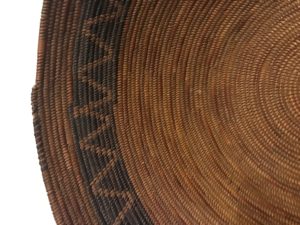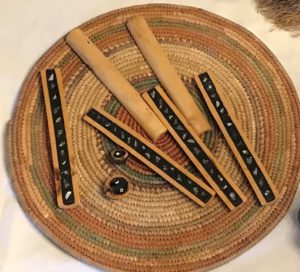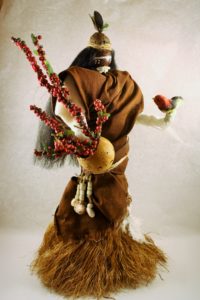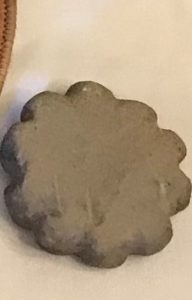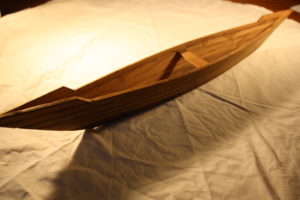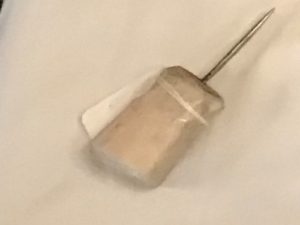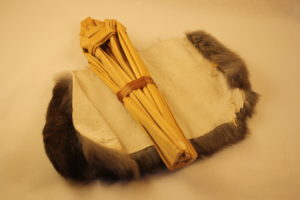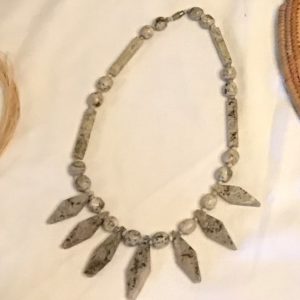Display Case 3
This Chumash basket, which includes Tongva stylistic details, is woven from sumac and juncus. The Chumash and Tongva territories bordered one another, resulting in cultural exchange between the two groups, as exemplified by the merging of styles in this basket.
Donated by John and Sally Campbell
These traditional Chaawchakel game pieces are made from walnut shells and split reeds, inlaid with asphaltum (tar) (shaanat) and abalone.
Loan courtesy of Craig Torres
Doll created by artist Michael Ghostcrow Bracamontes (Taa’Xaaki shum Ghostcrow). The doll represents a spiritual leader named Redbird.
Loan courtesy of CSUDH American Indian Institute
This is one of eleven cogstones, dating from 6000-3000 BCE, that were unearthed during the 1930 remodel of the Rancho Los Cerritos adobe. Cogstones are unique to Southern California, but modern scholars are not in agreement about the functions they may have served. Scan the QR code to learn more about cogstones, video courtesy of The Cooper Center
Donated by Elizabeth “Betty” Bixby
Wooden model of a ti’aat by canoe master, Michael Anderson.
Loan courtesy of Cindi Alvitre
This style of awl (‘eviit), made of deer antler and metal, is used in basket weaving. The awl belonged to Justin Farmer, renowned Ipay basket weaver.
Loan courtesy of CSUDH American Indian Institute
Basket Start
An example of the beginning of a basket, woven from juncus (shwaar) and yucca fibers (akoo).
Loan courtesy of Craig Torres
Tule Doll
Tongva children played with dolls fashioned from tule reeds (she’iiy mehaa’ar). This doll represents a baby in a basket, wrapped in a rabbit skin blanket (‘apeehan toshooxot).
Loan courtesy of Julia Bogany
Necklace
Contemporary Tongva necklace (xuuno’) made of soapstone (‘eesey).
Loan courtesy of Craig Torres

